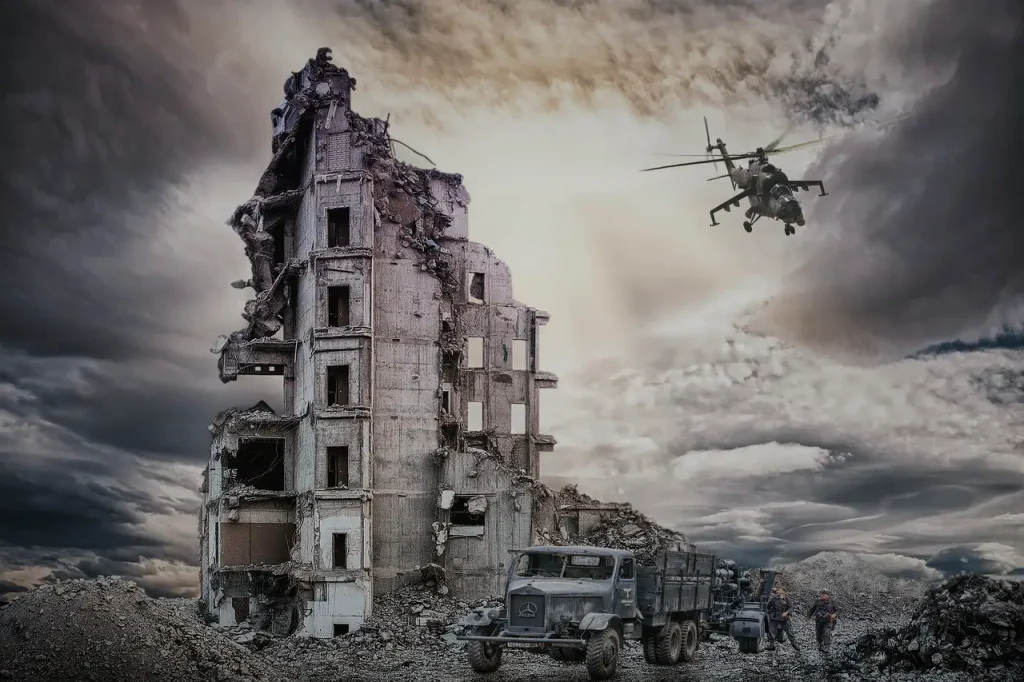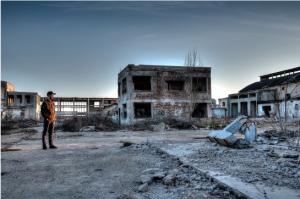For decades, NATO has been presented as a purely defensive alliance, existing solely to protect its member states from external threats. Yet, history tells a different story. From the bombing of Yugoslavia in 1999 to interventions in Libya and Afghanistan, NATO has repeatedly engaged in military actions far beyond its borders—often without a direct attack on its members. If NATO is truly defensive, why does its track record resemble that of an interventionist force?
NATO’s original purpose was to counter the Soviet Union during the Cold War, but with the USSR long gone, the alliance has only expanded its reach. The post-Cold War promise to limit NATO’s eastward expansion was abandoned, raising tensions with Russia and contributing to global instability. Meanwhile, its role in military interventions—many of which lacked UN approval—raises serious questions about its true objectives. Is NATO really about defense, or is it a tool for projecting Western power under the guise of security?
Imagine a world where military alliances are genuinely defensive, committed to de-escalation rather than provocation. A NATO that upholds its original mandate—protecting its members without interfering in sovereign states—could play a stabilizing role in global security. But to achieve this, the alliance must confront its own contradictions. It cannot claim to be a force for peace while engaging in offensive operations and expanding its influence unchecked.
It’s time for an honest reassessment of NATO’s role in global security. Should the alliance return to its defensive roots, or should it acknowledge its transformation into an interventionist force? Citizens, policymakers, and global leaders must demand transparency and accountability. The world cannot afford another “defensive” war that looks anything but.
Case Studies: Kosovo (1999), Libya (2011), Afghanistan (2001-2021)

NATO claims to be a defensive alliance, yet its military operations in Kosovo, Libya, and Afghanistan tell a different story. These interventions were not triggered by attacks on NATO members but were framed as necessary actions for humanitarian or security reasons. However, each of these conflicts left behind long-term instability, raising questions about NATO’s true objectives. Were these interventions about defense, or were they exercises in power projection under the guise of security?

- Kosovo (1999): NATO launched a 78-day bombing campaign against Yugoslavia without UN Security Council approval, setting a precedent for bypassing international law. While the operation was justified as a humanitarian mission to stop ethnic cleansing, it resulted in civilian casualties, destruction of infrastructure, and long-term instability in the region followed with another ethnic cleansing (of non-albanian people) and destroying monasteries, churches, and monuments. The recognition of Kosovo’s independence by Western states, despite Serbia’s opposition, further deepened tensions.
- Libya (2011): What started as a no-fly zone enforcement quickly escalated into a regime-change operation, leading to the overthrow and death of Muammar Gaddafi. Libya, once a stable country, descended into chaos, with armed militias, human trafficking, and a prolonged civil war. NATO’s intervention not only failed to stabilize Libya but also created a power vacuum that fueled extremism across North Africa that will be hard to uproot. Libia will never be the same and perhaps never in peace again.
- Afghanistan (2001-2021): NATO’s longest military engagement began as a counterterrorism mission after 9/11 but evolved into a nation-building project with no clear exit strategy. After two decades, trillions of dollars spent, and thousands of lives lost, NATO forces withdrew, leaving Afghanistan under Taliban control—essentially back to square one. The abrupt withdrawal highlighted the failure of military intervention as a long-term solution to security challenges and left people who supported the west for years, at the mercy of the talibans.
If NATO is truly a defensive alliance, it must critically assess its past interventions and their consequences. These case studies demonstrate that military action often leads to unintended instability, undermining NATO’s credibility. A return to the alliance’s original mission—strictly defending member states rather than engaging in external conflicts—would prevent further geopolitical disasters.
To regain trust, NATO must commit to respecting international law and ensuring that future operations are genuinely defensive rather than interventionist. Without accountability, the pattern of military miscalculations will continue, raising the risk of new conflicts. The question remains: Will NATO learn from these failures, or will it continue to justify interventions that create more problems than they solve?
The Blurred Line Between Defense and Intervention
NATO presents itself as a purely defensive alliance, yet its actions often suggest otherwise. While Article 5 of its charter states that an attack on one member is an attack on all, most of NATO’s military operations have not been in response to direct threats against its members. Instead, the alliance has engaged in interventions far beyond its borders, raising serious questions about whether NATO is still adhering to its original mission or if it has evolved into an offensive force under the pretense of security.
NATO’s interventions in Yugoslavia (1999), Libya (2011), and Afghanistan (2001-2021) highlight this contradiction. These operations were justified with narratives of humanitarian intervention or counterterrorism, yet their long-term consequences have often resulted in more instability rather than security. If NATO’s primary role is to defend its members, why does it repeatedly engage in conflicts that have little to do with collective defense?

These cases suggest that NATO is not strictly defensive but selectively engages in conflicts based on political and strategic interests. This raises concerns among both NATO members and non-member states about the alliance’s true purpose.
A truly defensive NATO would focus on protecting its borders rather than engaging in foreign interventions. If the alliance is to remain credible, it must clearly define the limits of its military involvement and ensure that its operations align with international law. The world does not need another military force acting under ambiguous justifications—it needs stability and de-escalation.
The key question remains: Will NATO return to its defensive roots, or will it continue to act as an interventionist power under the guise of collective security?
How Non-Member States Perceive NATO’s Actions
While NATO presents itself as a protector of democracy and peace, how do non-member states view its actions? In regions such as Eastern Europe, the Middle East, and North Africa, NATO is often seen less as a guardian of security and more as a force of Western influence. Its interventions—both military and political—raise alarms about the alliance’s growing impact on the sovereignty of non-member states. How can NATO claim to defend peace when it’s perceived by many as an aggressive force that disregards national boundaries and interests?
From Russia’s vehement opposition to NATO’s expansion, to the widespread disillusionment in the Middle East after NATO’s interventions in Libya and Afghanistan, non-member states view NATO with growing skepticism.
- Russia sees NATO’s eastward expansion as a direct threat to its sphere of influence and security. Despite repeated warnings and diplomatic appeals, NATO’s inclusion of countries like Estonia, Latvia, and Lithuania has heightened tensions and led to a militarization of the region.
- Middle Eastern states, particularly in Syria and Libya, have witnessed NATO interventions that were framed as humanitarian missions, only to result in chaotic power vacuums, economic collapse, and the rise of extremist groups. These actions are often seen as motivated by Western geopolitical interests, rather than genuine concern for regional stability.
- Africa has also felt NATO’s influence, as seen in the fallout from the Libyan intervention. NATO’s role in toppling Gaddafi left Libya in a state of lawlessness, which spread instability throughout the Sahel and beyond, exacerbating the region’s security challenges.
These interventions have left non-member states wary of NATO’s true intentions. They are increasingly questioning whether the alliance’s actions are genuinely in the interest of global peace, or whether they are serving a geopolitical agenda that undermines regional autonomy.
Conclusion: Maintaining Global Peace in an Evolving World

In a world where tensions are rising and conflicts are becoming more complex, the role of military alliances like NATO has never been more critical. While NATO was founded to ensure collective defense, the challenges of today—ranging from cyber threats to regional instability—demand a broader understanding of what it means to maintain peace. The question is no longer whether NATO is fulfilling its original mission, but rather how it can adapt to the changing nature of global security and contribute to lasting peace in a multipolar world.
NATO has the potential to be a central force in maintaining global peace, but only if it commits to a broader vision—one that prioritizes stability and cooperation over military domination. The alliance must shift its focus to peaceful conflict resolution, global cooperation, and addressing non-traditional security threats. By using diplomacy, promoting dialogue, and reinforcing the values of sovereignty and especially respect for international law, NATO can be a true force for peace in the world.




